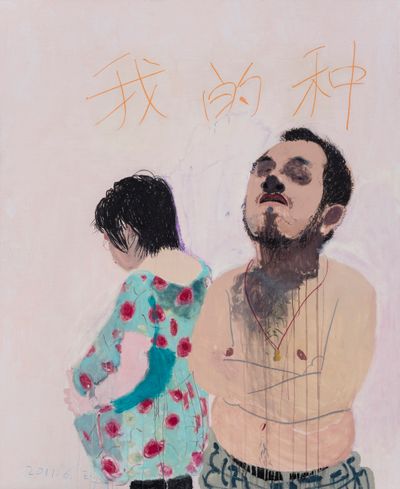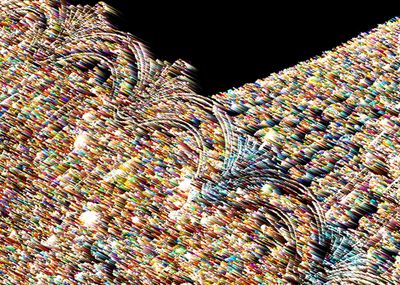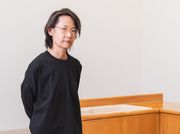Train to Busan: Art Busan 2017

Art Busan 2017 (2–5 June 2017). Courtesy Art Busan.
National tensions were high in the weeks leading up to Art Busan (2–5 June 2017). Three days before the opening of the fair in the South Korean port city, an article in the Korea Joongang Daily announced that due to an ongoing diplomatic feud between Seoul and Beijing over a United States antimissile system, fewer Chinese galleries would participate at this year's edition. (The prediction was correct: the number dropped to three Chinese galleries as compared to fifteen last year.) Across the Korean Demilitarized Zone, yet another sinister nuclear test by Kim Jong-un added to the uncertainty in Seoul, but down south in Busan, the atmosphere was considerably more relaxed. With a population of approximately 3.6 million, long sandy beaches and dense commercial districts, Busan is the second largest city in the country—billed as both the 'San Francisco of South Korea' and the cultural and economic centre of the region. Each year, the trading port on the southeastern tip of the Korean Peninsula plays host to the Busan International Film Festival (one of the most popular film festivals in Asia), while the Busan Biennale—curated last year by Yun Cheagab, director of HOW Art Museum in Shanghai—is a major fixture on the cultural calendar. While many of Busan's museums are attached to the city's universities, the Busan Museum of Art is in the affluent neighbourhood of Haeundae, directly across from the fair at Busan Exhibition and Conference Centre.
Art Busan was launched in 2012 for the explicit purpose of branding the city as a hub for art and culture, positioning the city's attractive scenery as a draw for international collectors. With 170 galleries from 16 countries participating, this year's edition of the fair was extremely painting-heavy, with a great deal of colourful, fantasy-inspired and decorative works dominating the galleries' showings. Imagery of Marilyn Monroe were seen in five separate booths, apparent evidence that celebrity and flash is still an easy sell. Luxury was also a running theme, with marble sculptures of designer handbags on view at Busan-based Gallery Ara's booth. Yet among the innumerable overtly commercial offerings were select treasures, including Kiseok Kim's triptych Flat Space (2017) presented by Korean gallery Lynn Fine Art, which used cement, acrylic and conte to depict a scene of twisted figures. Equally as painterly, Seoul-based artist Hyein Lee's small oil paintings of daily life were presented at Gallery Kiche's booth. Having worked and exhibited in New York and Belin, Lee is known for her impressionistic works which incorporate landscapes in her memory with those she observes while wandering cities like plein-air painters of yesteryear. Sungpil Yoon's futuristic twisted aluminum sculptures at Seoul's Space O'Newwall were similarly reminiscent of early 20th century strategies.
Photography was scant but made a welcome appearance at Dayspring Art Group's booth, which included works by Ji Hae Kim and Sin Young Kim, the latter of whom plays with light, hues and architecture to make geometric images that border on abstraction. Wooson Gallery showed a selection of paintings by Beijing-based artist Wang Yuping, whose standout works are emblematic of handling portraiture with an offbeat approach. My Seed (2011) shows a couple (or perhaps what once was a couple), the woman turned away and very pregnant, while the shirtless man stands with his arms crossed and chin lifted, eyes towards the viewer with a knowing look. The words 'My seed' are scrawled above in Chinese. A major player in both the Korean and global art worlds (their name translates to 'international' from Korean), Kukje Gallery brought their usual fair roster including Donald Judd, Ha Chong-Hyun, Candida Höfer and Kyungah Ham. Ham, who lists 'censorship' as a material in her embroidered works, uses a middle man in China to smuggle her designs to North Korea labourers, often including hidden messages within them as a means of communicating with the isolated workers. Ha is one of the most recognised Dansaekhwa artists of today—so revered that fabric imitations of his works made by pushing paint through the backsides of canvases can be seen in local hotels.
Three non-commercial curated sections were the high points of Art Busan: 'Realism in Korea; and Today', 'Art Accent: Posture and Edge of Relationship', and a DSL Collection special exhibition. Curated by fair director Byun Hong-chul and including works by Kang Yo-Bae, Kim Jung-Heun, Noh Suntag and Ahn Chang-hong among others, Realism in Korea, and Today focused on Minjung art, or 'people's art'—a style born from a generation yearning for democracy in the 1980s and 1990s. Minjung artists gained attention for rebelling against government repression of outright political activities in art, creating works with overt social and democratic messaging. Though Minjung is expected to exceed Dansaekhwa in market popularity (a sentiment echoed in a symposium on Asian avant-garde art at Asia Society Hong Kong Center a week prior to the fair), as the wall text mentions, Minjung artworks were notably excluded from government supported programming in Korea last fall. A highlight of the exhibition was Im Heung Soon's 2014 documentary film Factory Complex (previously shown at the Venice Biennale in the same year) which considers the social impact of Korea's rapid economic development through the lives of working women—including sobering testimonies by call centre workers, flight attendants, cashiers and factory labourers.
Organised by Jung Man-young, Art Accent focused on two Busan artists: Song Sung-Jin and Kim Tae-hee. Kim's motion sensor-equipped works alluded to the twisted relationship between surveillance and technology, while Song Sung-Jin's ongoing project Postures, first presented at Künstlerhaus Bethanien in Berlin, invited participants to hang from a bar while being photographed by the artist. Song printed out the images on enormous sheets which were then hung in the booth. As an assistant explained, the project is a way to illustrate the struggles of daily living and various attempts at survival—perhaps an update on the popular 'Hang in there, baby' cat poster of the 1970s. dslcollection, the project of French husband-and-wife collectors Sylvain and Dominique Levy, presented a selection of works by contemporary Chinese artists curated by Joanne Kim, including Shen Shaomin, Sun Yuan and Peng Yu and Cheng Ran. The couple also displayed their 'virtual reality museum' which previewed last year at Asia Now Paris; a sustainable alternative to the private mega-museums popping up in China and the first of its kind in the world. Donning goggles and handling a video game controller, visitors to the 'museum' can 'visit' 30 contemporary Chinese artworks from the collection in the imagined futuristic building. Educational audio and video descriptions of the works are accessible with the press of a button. Created in partnership with Monochrome, the project is an exciting move towards a democratisation of the still-privileged experiencing of contemporary art. The couple gave a talk on Friday about their collection as part of the fair's conversation series, as did German collector Desire Feuerle.
Dansaekwhwa art and Korean monochrome painting has reached record prices in recent years due to a surge in international interest in the styles. Indeed, many paintings by Lee Ufan, Park Seo-bo and Ha Chong-Hyun were seen throughout the fair. However, what would have been interesting is to have seen younger artists unpacking the implications of this dominant national narrative. Yoo Ju Hee's series Repetition—Trace of Meditation (2016) at Dongwon Gallery's booth seemed to attempt this, but ended up appearing derivative. Overall, the fair was short on new media, films, and works by young artists. Interesting collaborations with local institutions would be fruitful, especially given the close proximity of the Busan Museum of Art to the fair. Wall and floor space for challenging and innovative art (which certainly is being produced in the country, as evidenced by the purposeful work of independent archives, art spaces and museums) was often taken up by safe pickings, a sign that Art Busan requires more time to mature and more curatorial discernment if it truly aims to be an international event. Additionally, the prominence of dreamy, colourful and utopic paintings at the fair posed a question: why is fantasy or escape such a common theme here? It is important to note here that art has been heavily censored in Korea as recently as last year under the government of the ousted President Park Geun-hye. As gleaned from a conversation with an artist in Seoul, only now with the new more liberal President Moon Jae-in do artists feel more comfortable to publically show their more critical works.—[O]













































































































































































